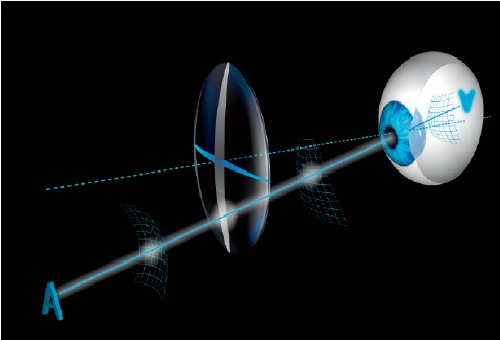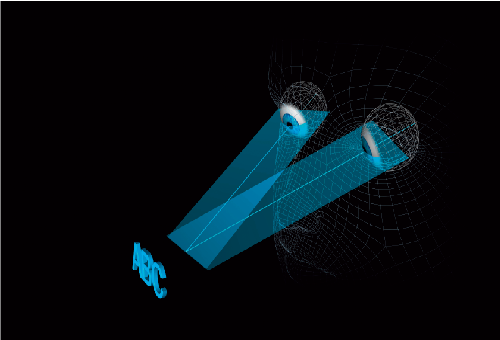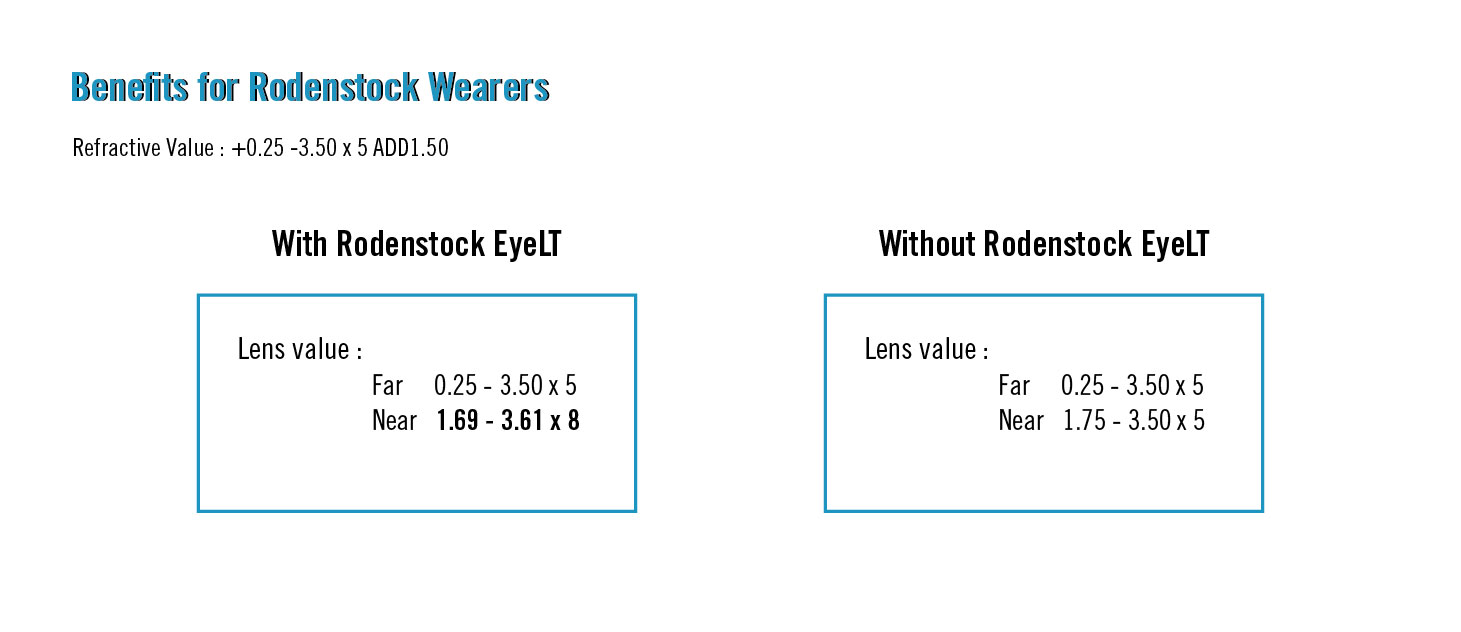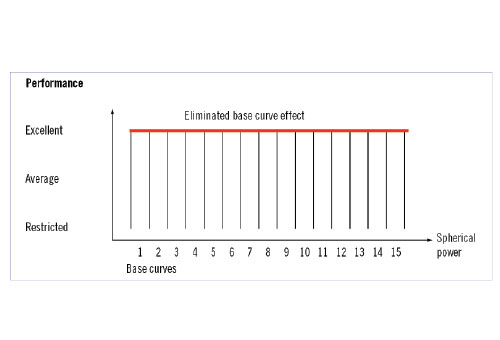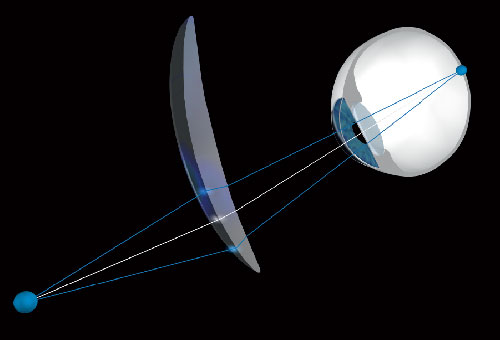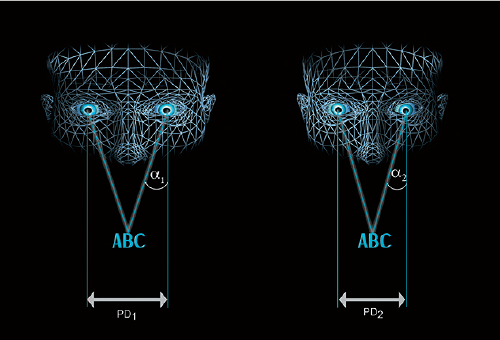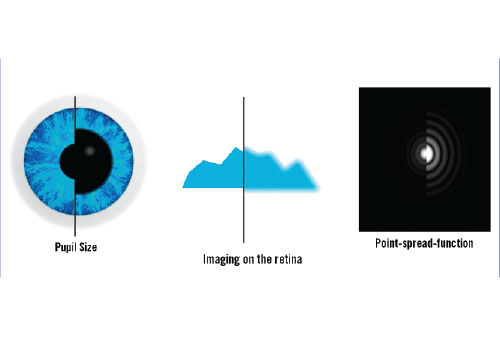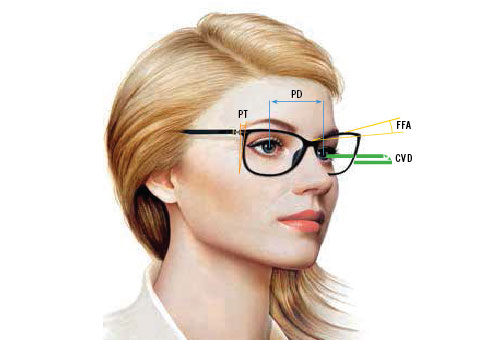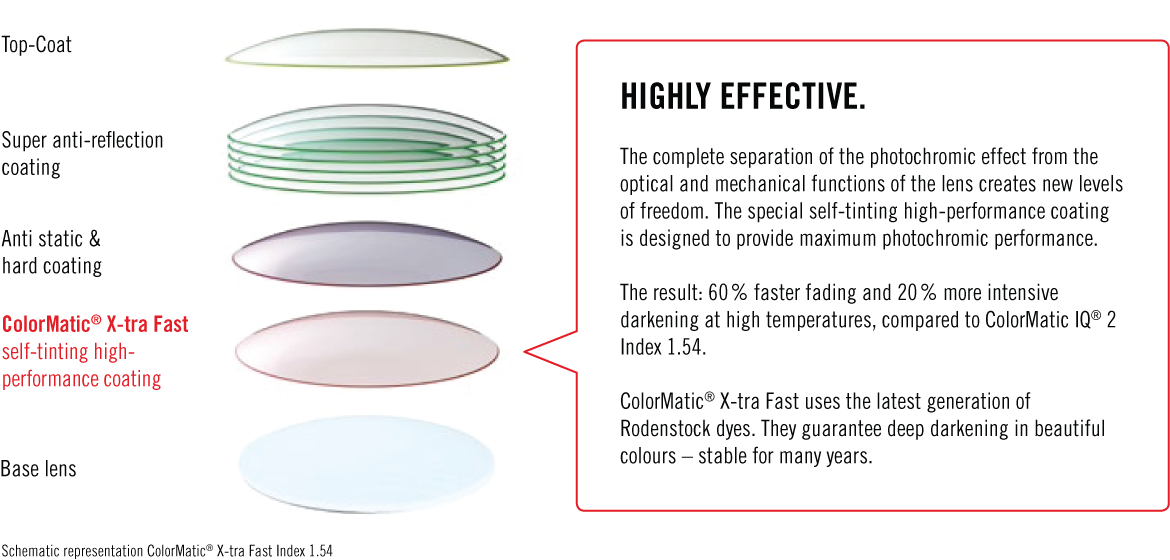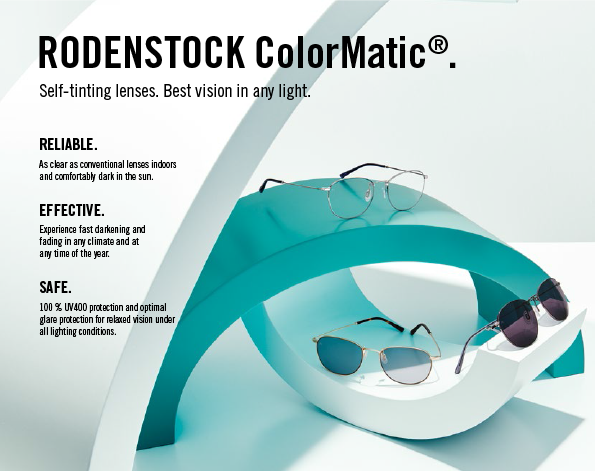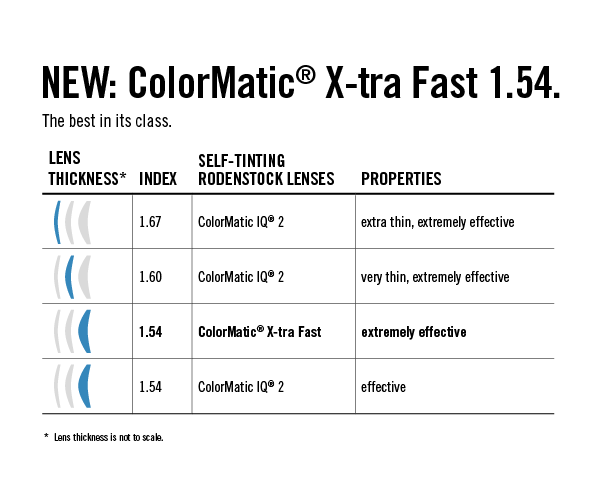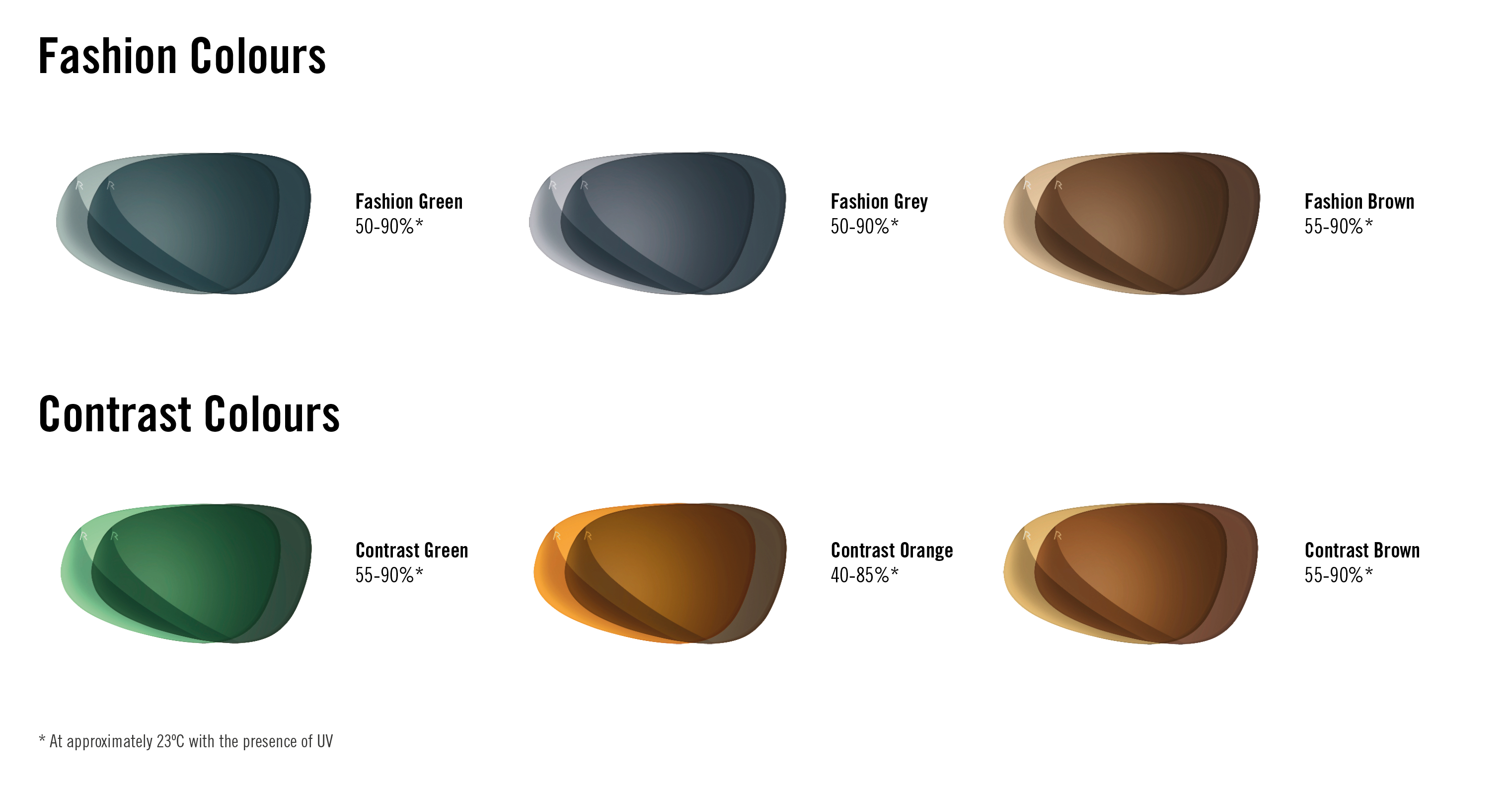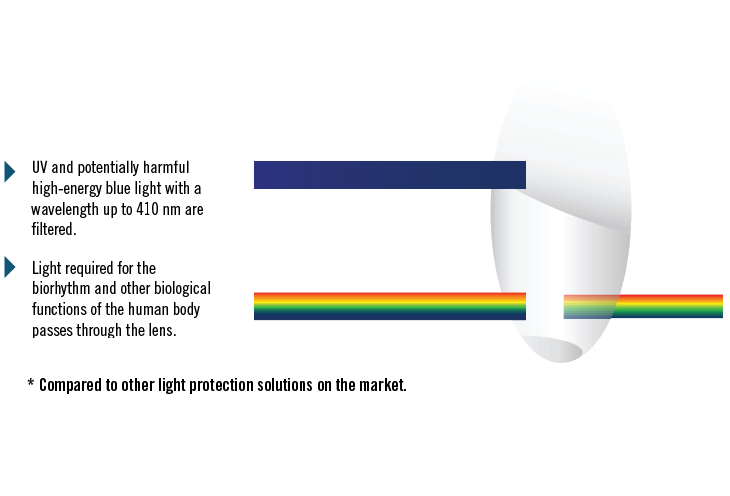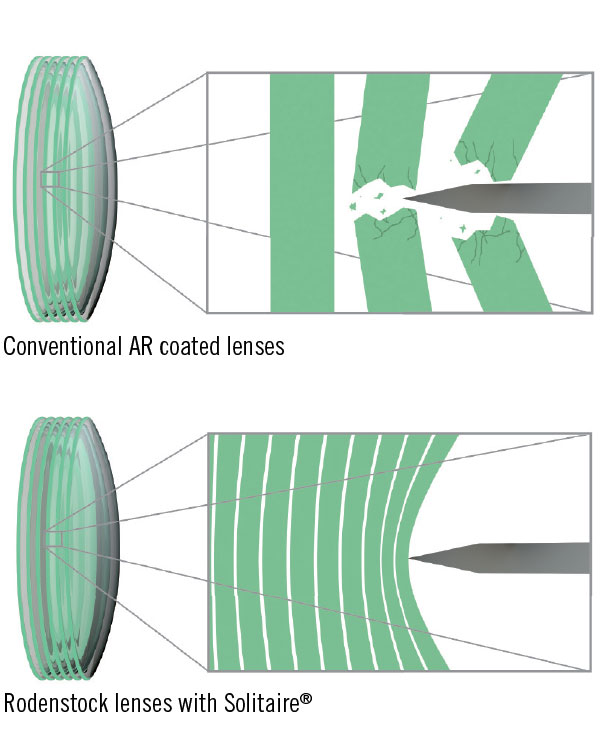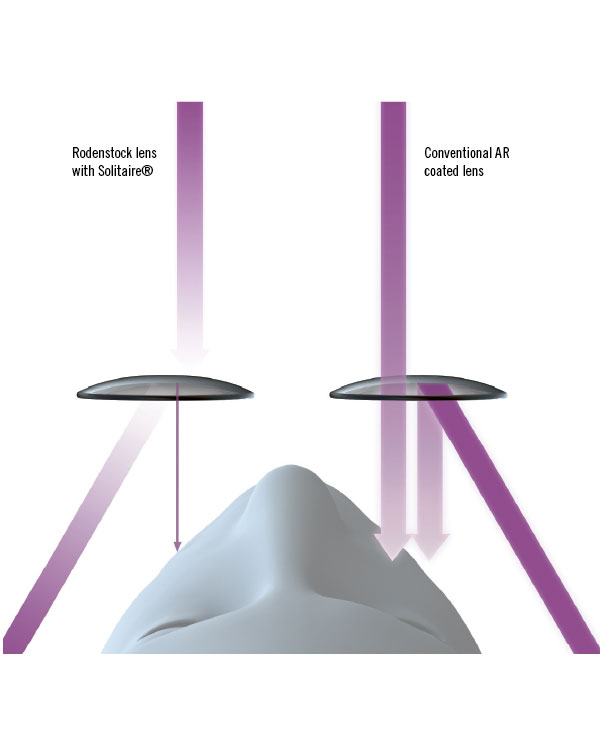Since Rodenstock introduced Individual Lens Technology to the market in 2000 and the first individual Impression progressive lenses arrived on the market, individual lenses have gained importance worldwide.
Another milestone in ophthalmic optics was the introduction of the FreeSign® progressive lens in 2007. This unique design freedom made it possible for the first time to adapt the placement and size of the visual zones to the individual personal visual requirements and the visual habits of the person wearing the spectacles. Two years later, this freedom was passed on to the Ergo® near comfort lenses spectacles and developed even further.
Backgrounds
With progressive lenses, until now it has only been possible to change the spherical value for near vision in the form of the addition power. The cylinder value and the cylinder axis were adopted from the far refraction, since nothing else could be implemented from a technical perspective.
However, with Eye Lens Technology, Rodenstock has been able to master this technical challenge. It is now possible to realise a near refraction in a progressive lens that is independent of the far refraction.
There are a variety of causes of near astigmatism.
On the one hand, there are physiological reasons. There is a rotation of the eyes (rolling) during eye movements. Due to this rotation, there are different cylinder axes that have to be implemented in the lens depending on the line of vision. This is described in Listing’s Law.
Another cause – purely of a geometric/optical nature – is the so-called effective near astigmatism. This requires a different cylinder value for near vision than for far vision. And finally, there are individual anatomic causes that can lead to near astigmatism due to asymmetrical accommodation, for example due to tilting of the eye lens. These interrelationships and their effects are described in detail in technical literature.
Until now, however, it was assumed that there was no way to correct this near astigmatism in a progressive lens.
The fact that differences in the cylindrical correction between far vision and near vision could not be corrected belongs to the past now thanks to the EyeModel. Rodenstock, with its core competence in optimising and manufacturing individual lenses, is now able to calculate and manufacture such progressive lenses for the first time.
EyeModel: Listing’s Law and Effective Near Astigmatism
During optimisation of individual progressive lenses, the EyeModel takes into consideration the natural eye movements for far vision and near vision. Now, besides Listing’s Law for far vision1, which has already been taken into consideration since the year 2000, there is also an implementation of Listing’s Law for near vision. Hence, together with effective near astigmatism, the EyeModel opens up a new dimension for taking care of the visually impaired who have astigmatism, and that means better vision for more than 80% of the customers!
Because of taking Listing’s Law and effective near astigmatism into consideration, the spectacle wearer receives better correction in the near range. The EyeModel Effect provides an increase performance of the lens of up to 25% for the customer. In this way, the customer profits from perfect vision at all distances.
No additional measurements are necessary for improved near vision. This means the optician determines the refraction values for far vision and the addition power as usual. Rodenstock then calculates the respective new cylindrical effect (effective near astigmatism) including the cylinder axis (Listing’s Law for near vision) for near vision.
The effective near astigmatism can lead to a difference of up to 0.5 D between the far and near cylinder. In addition, the natural rolling of the eyes causes a cylinder axis change of up to 7° for near vision. Hence, an overall astigmatic error (EyeModel Effect) of more than 1.0 D can arise, which would reduce visual acuity in near vision by half. Since approx. 80% of all orders involve cylindrical lenses, the majority of all progressive lens wearers will profit from the EyeModel.











